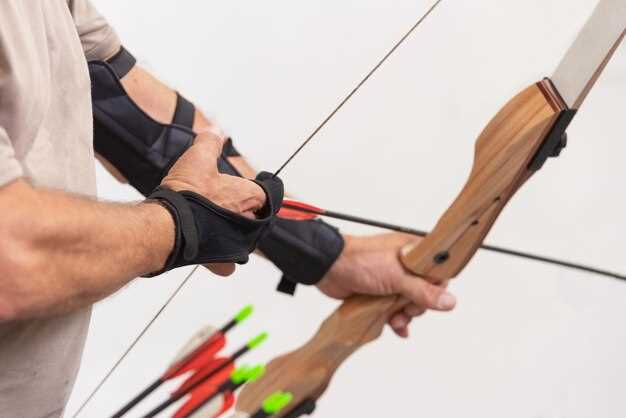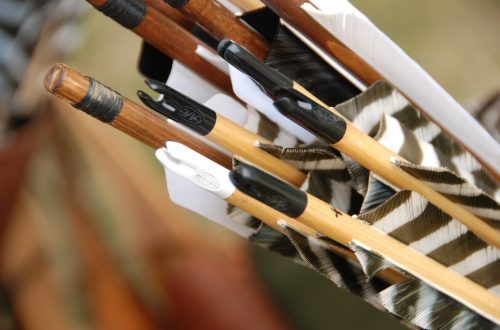
Recurve vs compound crossbow – pros and cons

In the world of archery, selecting the right equipment is crucial for enhancing performance and enjoyment. Among the various types of crossbows available, recurve and compound crossbows are two of the most popular options, each offering unique benefits and drawbacks. This comparison aims to delve into the advantages and disadvantages of these two designs, helping enthusiasts make informed decisions based on their individual needs and preferences.
Recurve crossbows are known for their simplicity and traditional design, making them appealing to those who appreciate classic archery. Their structure allows for a lighter frame, which can be a significant advantage for beginners or those looking for a more portable option. On the other hand, compound crossbows leverage advanced technology to provide increased power and precision, catering to more experienced users who are seeking to elevate their performance.
Understanding the distinct characteristics of each style is essential for choosing the right crossbow to suit particular purposes, whether for hunting, target shooting, or recreational use. By evaluating the strengths and weaknesses inherent in recurve and compound crossbows, archers can better align their equipment with their shooting goals.
Performance Metrics: Speed, Accuracy, and Power Comparison

The performance of crossbows can be effectively measured through three primary metrics: speed, accuracy, and power. Each metric varies between recurve and compound crossbows, influencing a user’s choice based on their specific needs.
Speed is a crucial factor in determining how quickly a projectile can reach its target. Compound crossbows generally offer higher speeds due to their advanced cam systems, which allow for greater energy storage. This results in arrow velocities often exceeding 400 feet per second (fps). In contrast, recurve crossbows typically have lower arrow speeds, usually in the range of 250 to 350 fps. This difference makes compound crossbows more suitable for hunting at longer distances where speed can significantly impact the arrow’s trajectory.
Accuracy is essential for effective shooting. Compound crossbows provide enhanced accuracy thanks to their stability and more sophisticated sighting systems. The rigid structure and let-off feature of compound designs allow for easier aiming and less shooter fatigue. Recurve crossbows, while often reliable, can have a steeper learning curve, as their lighter build can lead to more pronounced effects from user input and environmental factors. Consequently, archers may find that mastering a recurve requires more practice to achieve the same level of precision.
Power refers to the kinetic energy transferred to the projectile upon release. Compound crossbows excel in this area due to their efficient energy transfer capabilities, often delivering more force with less physical effort from the shooter. This translates into deeper penetration and a higher chance of a successful shot. Recurve crossbows, while powerful, may not generate the same level of kinetic energy, particularly in comparison with high-end compound models. However, they are often favored for their simplicity and lower maintenance requirements.
In summary, when it comes to crossbow comparison based on performance metrics, compound crossbows generally outperform recurve models in speed, accuracy, and power. However, individual preferences, intended use, and personal shooting style play significant roles in determining the best choice for each archer.
Maintenance Requirements: Care Tips for Each Crossbow Type
Crossbows are popular hunting and shooting tools, and proper maintenance is essential for their longevity and performance. Understanding the care requirements for each crossbow type is crucial. Here, we break down the maintenance needs for both recurve and compound crossbows.
Recurve crossbows generally have fewer moving parts, which simplifies their maintenance. Regularly inspect the limbs for any signs of wear or damage. Use a soft cloth to wipe down the limbs and the riser to remove dirt and moisture, preventing corrosion. It is important to check the string for fraying or signs of wear every few uses. Lubricate the string with a specialized wax approximately every 10 to 15 shots for optimal performance. Additionally, examine the trigger mechanism periodically to ensure it functions smoothly and does not have rust or debris.
Compound crossbows, on the other hand, require more attention due to their intricate designs and mechanisms. Begin by ensuring that the cables and strings are in good condition, checking for any wear and tear. It is advisable to replace the string and cables every two to three years, even if they appear intact, as they may weaken over time. Clean the riser and limbs using a damp cloth, and avoid using harsh chemicals as they may damage the finish. Regularly lubricate the moving parts of the cam system, following the manufacturer’s guidelines to avoid any malfunctions.
Both types of crossbows should have their bolts inspected regularly. Ensure that they are not cracked or damaged, as this can lead to inaccurate shooting or dangerous situations. Store your crossbow in a cool, dry place when not in use and consider using a protective case to prevent any physical damage. Following these maintenance tips will help ensure that your crossbow remains in excellent working condition and provides consistent performance.
Pricing and Accessibility: Cost Analysis of Recurve and Compound Crossbows

The cost of crossbows varies significantly between the two primary types: recurve and compound. Understanding the pricing structure helps potential buyers make informed decisions based on their budget and intended use.
Recurve crossbows typically present a more affordable option. Ranging from around $200 to $700, these crossbows are often simpler in design and easier to manufacture. The lower cost can be attributed to fewer moving parts and less complex technology. This makes them an attractive choice for beginners or casual users who may not want to invest a large amount upfront.
On the other hand, compound crossbows are often priced higher, generally falling between $400 and $1,500. The increased price reflects their advanced technology, including features such as cams, pulleys, and adjustable draw lengths. These elements provide enhanced performance, efficiency, and precision, making them suitable for serious hunters and competitive shooters.
In terms of accessibility, recurve crossbows are easier to find in local sporting goods stores. Their simpler construction means that they require less specialized maintenance, making them convenient for casual users. In contrast, compound crossbows may necessitate more specialized knowledge or tools for tuning and maintenance, which can deter some buyers.
Overall, when considering a purchase, it is crucial to weigh the initial investment against the long-term benefits of each type. Recurve crossbows offer affordability and simplicity, while compound crossbows provide advanced features at a higher cost. Ultimately, the choice depends on the user’s skill level, goals, and budget.




